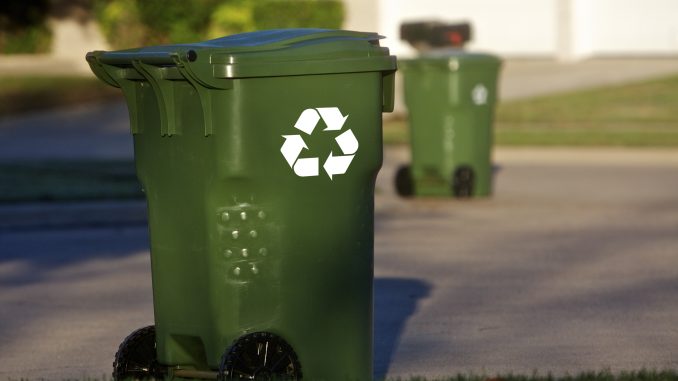
ALBEMARLE — As environmentalists, corporations and the public increasingly focus on the mass of plastics discarded every day, they are running into a stubborn problem. The recycling market continues to sputter, most recently from weak demand and low prices. Waste Management, the trash collection and disposal company, expects its earnings from recycling to shrink by about $100 million in 2018 compared to 2017.
Americans are recycling more than ever — some 35 percent of consumer trash was recycled or composted in 2015, according to the most recent government data — and scrap recycling, which includes used appliances, manufacturing leftovers and some items from curbside bins, was a $117 billion industry in 2017. But big price swings continue to challenge the industry. The price of mixed scrap paper, for example, has plummeted from $75 a ton in 2017 to basically zero, said Joe Pickard, chief economist at the Institute of Scrap Recycling Industries, a trade group.
Much of the plunge is due to China, once the world’s biggest importer of recyclable materials. China has stopped accepting a variety of mixed paper and plastic scrap, citing efforts to clean up the environment, and plans to add other scrap products to its banned import list.
Recyclable products that China didn’t ban have stricter rules regarding contamination. The amount of trash accidentally mixed in with most recycled products can’t exceed a half-percent. For comparison, trash makes up 25 percent of what arrives at Waste Management’s facilities that sort and bale recyclables. That’s 500 pounds of contaminants for every ton of recyclables.
Reducing contamination is largely considered the starting point for creating a more stable U.S. recycling market. And that means teaching consumers what they can and cannot put in recycling bins.
Large amounts of contamination could be arising from the increased prevalence of what the industry calls “single-stream recycling.” Most recycling program in the U.S. are now single-stream — meaning that all household recyclables are placed into one bin for pickup. According to industry reports, about 80 percent of U.S. recycling programs commingle materials like glass, plastic and paper. This is done mostly to increase participation by consumers who did not take to the sorting programs that preceded single-stream. According to an October Harris Poll, 66 percent of Americans said they would not recycle if it was not easy.
Scientists, researchers and chemical makers are rethinking plastics recycling. Today, the most common form is cutting up a plastic product, melting it and then reshaping it into something new. But this creates a product less durable than new plastic. One promising alternative is chemical recycling which turns plastic back into its building-block molecules. The molecules can then be recombined into new plastics without degrading properties as melting does.
Chemical companies are investing in new recycling technologies. BP, for instance, will purchase products such as diesel fuel from RES Polyflow, an Ohio company that turns mixed plastic into a crude-like oil.
Locally, the issue of single-stream recycling is affecting households in Stanly County. Cesar Correa, city administrator in Locust, says that his city has not had the problems that some others have experienced with single stream, but costs are continuing to rise.
“From December 2017 to April 2018, we experienced a 50 percent increase in the costs of collection,” Correa told Stanly County Journal. “We use Waste Management for our collection. They found a closer location to process our recyclables which cut the transportation costs.”
Locust households pay $10 per month for weekly garbage and bi-weekly recycle pickup. Correa said he could not put a percentage figure on the amount of non-recyclable waste that shows up in the Locust stream.
“Those numbers are hard to determine,” he said. “Unless you go bin by bin and count, there’s no way to determine an exact number.”
The Associated Press contributed to this story.



